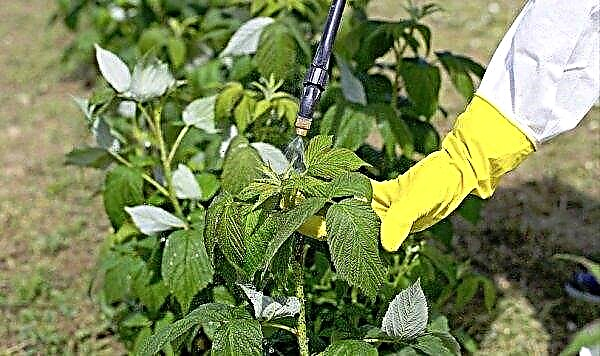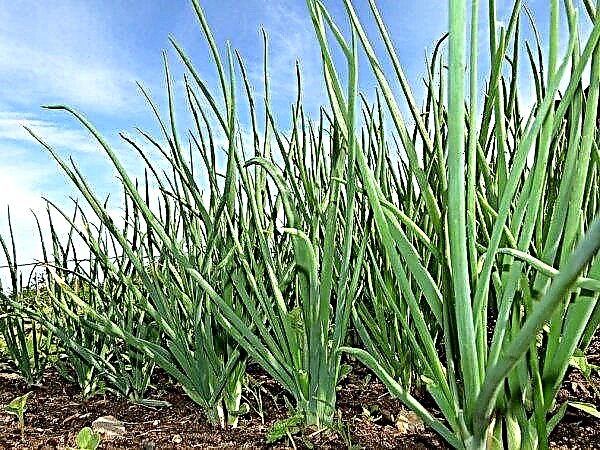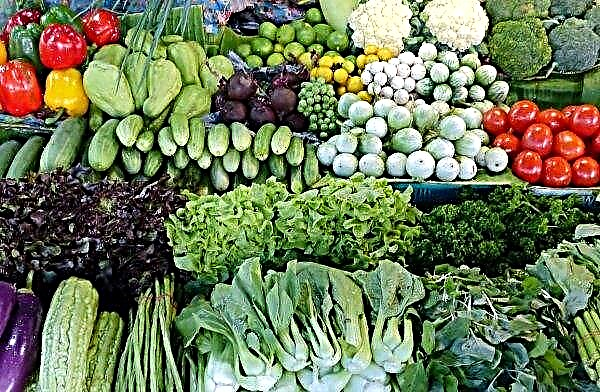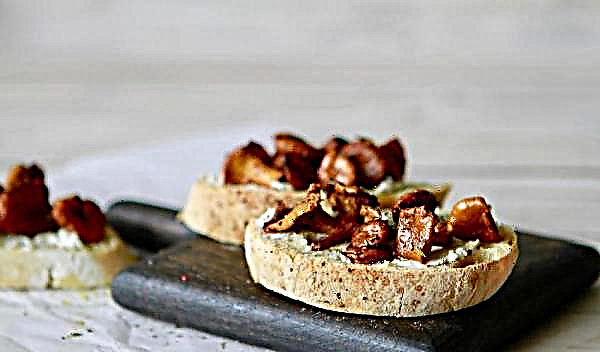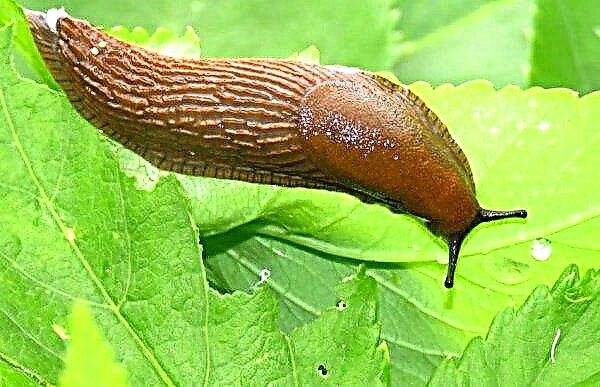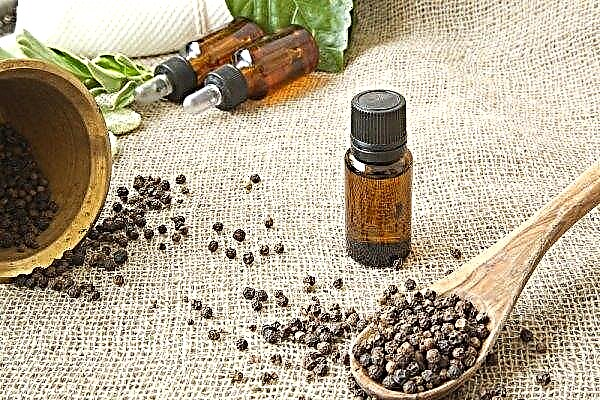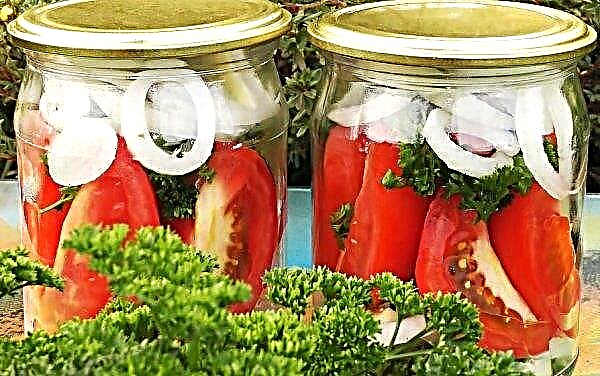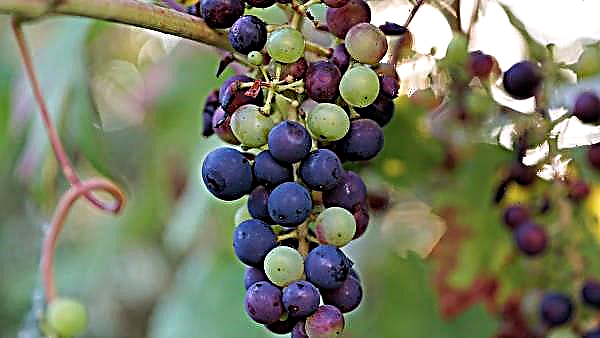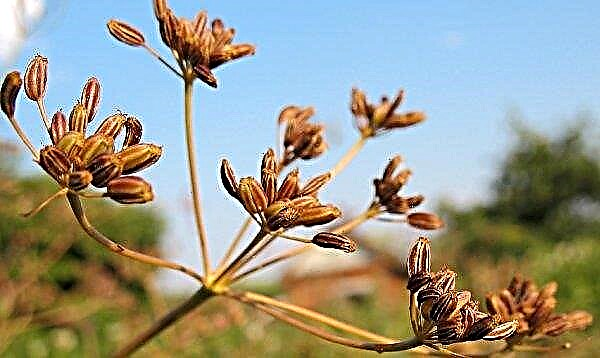Large-leaved hydrangea is not difficult to grow, but its main drawback is that it often freezes in the winter. A variety of this type of Bodensey hydrangea is easier to grow in pots, but with proper care and protection from frost, it is quite possible to get beautiful flowering bushes in the open ground. Learn more about this great variety.
Grade description
Hydrangea macrophylla Bodensee or large-leaved hydrangea Bodensey is a lush shrub with large ovoid bright green leaves that turn red by autumn. Its height, as a rule, is slightly more than a meter, and the same diameter.
The bush blooms from July to September, covered with beautiful large inflorescences, the colors of which are very diverse - from pale pink to purple with a white center. With increasing soil acidity, you can get flowers in blue shades.

Winter hardiness and growth requirements
This variety does not tolerate a strong decrease in temperature, so it is better to grow it in a pot at room temperature. You can also leave bushes on the street for a warm period, and with the onset of cold weather bring them into the house. If you want to leave Bodensey hydrangea in the open ground for the whole year, you need to take care of its reliable shelter.
Outdoor planting and care
Bodensey hydrangea usually tolerates planting and changing the place of growth. It easily takes root and begins to grow fast enough. The main thing is to observe the simple rules necessary for the most comfortable development of bushes.
Important! The rules for planting and caring for large-leaved hydrangea set out below are different from the rules that apply to other species of this plant, so they must be carefully observed.
Landing rules
The best time to plant large-leaved hydrangea is spring, especially if it has a rhizome without a protective lump of earth. If you transplant a flower from a pot without destroying the earthen lump, you can do this at any time of the year, but a spring period is still preferable. It is necessary to choose the time when the buds have not yet opened, but there are no strong frosts so that the stress from changing the place of growth for the plant is minimal.
The place you need to choose is protected from the wind, with good access to sunlight. But it is important to ensure that there is protection from the midday scorching sun. To do this, hydrangea bushes can be planted next to tall trees that cover them a little, or make a special removable cover.

A soil suitable for hydrangea should be acidic or neutral, light, but retain moisture well.. The Bodensey variety grows well on medium-fertile loams and peaty soils, in which sand is added.
Step-by-step instructions for disembarkation
It is advisable to buy a hydrangea in a potso that its root system is protected by a lump of earth, but if for some reason the roots are open, they need to be planted in the same way as fruit trees, like an apple tree.
Did you know? Literally Latin name hydrangeas Hydrangea is translated as a "vessel with water", which perfectly characterizes its need for frequent watering.
Planting hydrangea Bodensey is carried out in the following sequence:
- Dig a hole about 40 cm deep and about 60 cm in diameter.
- In the event that the soil is too sandy, pour at least 10 cm of clay on the bottom of the pit to retain moisture. On heavy clay soils, on the contrary, it is necessary to prevent stagnation of water - for this, drainage from broken brick or gravel up to 20 cm thick is laid out.
- Prepare a soil mixture of equal parts of peat, humus and sand. Add potash and phosphorus fertilizers to it according to the instructions on the package.
- In the center of the pit, sprinkle the soil with a small hill.
- Place a plant on it, carefully spreading the roots along the edges of the hill. The root neck should be at ground level.
- Fill the rhizome with the remainder of the soil mixture and gently ram.
- Form a small rim of earth along the edge of the hole to retain moisture, and water the plant abundantly.
- After this, compact and mulch the soil under hydrangea again.

Watering and feeding
In the period after planting, hydrangea bushes should be well watered so that they are better rooted in a new place. And also there must be a regular plentiful watering on hot summer days so that there are no burns on the leaves that can cause drought. It is necessary to water first of all during the period of budding and flowering, pouring at least two buckets of soft and warm water per week under each bush.
For better growth and development, Bodensey hydrangea needs additional nutrition, which is carried out according to such a plan:
- To ensure abundant flowering in the spring, it is necessary to introduce a complex fertilizer containing phosphorus, nitrogen, potassium, as well as all the necessary trace elements. You can use special mixtures designed for hydrangeas, taking into account all their needs.
- In the summer, 1-2 fertilizing with potash and phosphorus fertilizers is carried out in order to best prepare the plant for wintering.
When applying fertilizers, you need to consider the color of the flowers. If you want a blue tint, you can add aluminum or iron alum to the mixture. And in case you like pink more, the soil needs to be made more alkaline.

Pruning
Since hydrangea does not tolerate winter frosts, it must be covered. For this, autumn pruning of bushes is preliminarily carried out.
It is performed in the following sequence:
- All dry inflorescences are removed after flowering.
- In early autumn, cut the leaves on the lower half of the shoots.
- A little later, all remaining leaves are removed. In this case, you need to leave only a few top sheets protecting the kidneys.
- Next is the pruning of shoots. But large-leaved varieties of hydrangea do not need this. All their branches are able to be covered with flowers next year, so they are left intact, not pruning or shortening.
 In the spring, after the shelter is removed, it is necessary to inspect the bushes well and remove all frozen, damaged and diseased branches
In the spring, after the shelter is removed, it is necessary to inspect the bushes well and remove all frozen, damaged and diseased branches
Shelter for the winter
Hydrangea Bodenci is able to tolerate frost no lower than -23 ° C, so that in regions with warm and snowy winters, it can be left out. A thick layer of snow can protect the bushes well. It is enough just to bend them to the ground, spud a little and cover with one layer of non-woven material.
But if you cannot be sure that there will be a lot of snow and the frost will not exceed the permissible norm, it is better to cover the hydrangea thoroughly and reliably. If the bushes are low, it will be enough to bend them to the ground, cover them with dry soil and cover with a film. Also very reliable is the covering with spruce branches.
It is carried out in the following sequence:
- Bend bushes to the ground.
- The root neck is covered with peat or soil.
- From above cover hydrangea with spruce branches.
- A non-woven material is applied in a second layer and pressed to the ground with stones or dug along the edges.
Instead of spruce branches, several layers of nonwoven fabric can be used.. Under such shelter, the bushes are well preserved, because the inside is quite warm. In addition, in this case, air can penetrate through the tissue, which prevents the plants from aging.

How to grow at home
Bodensey hydrangea grows very well in an ordinary city apartment, because she loves heat, moisture and good lighting, which can easily be achieved by placing it on the windowsill or putting it on the balcony. You can transplant a flower from the street or buy in a pot. By following the simple rules of planting and care, you can grow very beautiful and unpretentious flowers.
Choosing a pot and place of growth
If you want hydrangea to grow faster in a pot, you need to choose it larger than the root systemso that she has a place to develop. If you do not plan to increase the bush in volume, the pot should be small.
Important! Hydrangeas grown in oversized containers will not bloom.
Its form also matters. Since the rhizome of hydrangea does not grow down, but to the sides, the capacity for its cultivation should not be deep. It is better to choose wide pots for these flowers. In summer, it is better to put flowers on a balcony or a well-lit window sill, and in winter it should be removed to the basement so that they are at rest and develop correctly.

Plant transplant from the street
It is necessary to transplant Bodensey hydrangea into a container for growing at home in the spring, before the buds open and the flower grows actively.
Landing is carried out in the following sequence:
- Wash the pots thoroughly, even if they are new, to disinfect them.
- Buy a special substrate in the store or prepare the soil yourself from equal parts of sand, peat, turf and sheet land.
- Pour the potassium permanganate soil or calcinate it.
- Put small pebbles on the bottom for drainage.
- Put a layer of substrate on top and smooth it.
- Dig a bush and trim dry and damaged roots.
- Put the flower in the pot and cover it with the rest of the soil, but so that the root neck remains open.
- Water the plant well to compact the substrate.
- Mulch the soil with peat so that it does not dry out too quickly.
 When planting, remember that the substrate must not reach the edge of the pot by about 2 cm
When planting, remember that the substrate must not reach the edge of the pot by about 2 cm
Further care
Indoor hydrangeas need good watering. It should be carried out only with soft, slightly acidic water. Do not allow the soil to dry out in a pot, so it is watered regularly. The only exception is the dormant period, in which the plant is introduced gradually, reducing the volume of water.
Did you know? In the so-called "language of flowers" a presented bouquet of hydrangeas means gratitude and cordial affection.
After the first inflorescences appear, fertilizers are applied every two weeks instead of watering under each flower. You can buy special mixtures created for flowering plants. They are added in the quantities indicated on the package. After flowering, fertilizing with potassium phosphate fertilizers is allowed, but it is not mandatory.

Trimming large-leaved hydrangea is not necessary, because its inflorescences are formed on both new and last year's shoots. But sanitary pruning is required. It can be carried out to a state of rest, or after it. All damaged, diseased and dry branches must be removed.
Video: Garden or large-leaved hydrangea
Large-leaved hydrangea Bodensey is one of the most beautiful ornamental plants that can be grown both at home and in the open ground. It is not difficult to care for this flower, the main thing is to remember in what conditions it grows and develops best, and it is imperative to observe them.
Network user reviews
Many complain about Bodensey. Although it doesn’t grow in my open ground, I have dohlyatin compared to other hydrangeas. Well, last year, when it was acquired, I had to nursing along with Blauer Zwerg. Blauer Zwerg went well in growth, built up powerful shoots, and at Bodensey a bunch of small and thin formed. I partially removed them so that the remaining ones would enter into force, but there was little sense, they still did not become thicker. And now she’s already grown, despite the fact that she’s wintering on a cold balcony and again some dead shoots. Others have normal plump shoots.


